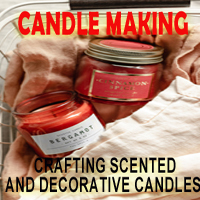


The Healing Power Of Creativity
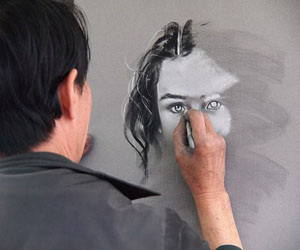
In a world marked by constant hustle and bustle, it's essential to find moments of respite and relaxation. Therapeutic crafts offer a means to achieve just that. Engaging in creative activities with a therapeutic focus can be a powerful antidote to the stresses and anxieties of daily life. These activities not only provide a welcome break but also encourage self-expression, mindfulness, and a sense of accomplishment. Let's explore the healing power of therapeutic crafts and the benefits they bring to our well-being.
The Mindful Process
Therapeutic crafts encompass a wide range of activities, from painting and drawing to knitting, pottery, and woodworking. What unites them is the intention behind the practice - the goal of soothing the mind and nurturing the spirit. Engaging in such crafts often requires a degree of focus and concentration, allowing individuals to become fully immersed in the process. This state of mindfulness helps to temporarily set aside worries and the constant stream of thoughts that can lead to stress and anxiety.
The Benefits Of Therapeutic Crafts
Stress Reduction: The act of creating something with your hands can be meditative in itself. Whether you're knitting, painting, or sculpting, the rhythmic and repetitive motions can help lower stress levels, ease tension, and promote relaxation.
Self-Expression: Therapeutic crafts offer a non-verbal means of self-expression. You can convey your emotions, thoughts, and feelings through your creative work, allowing for a deeper connection with yourself.
Sense Of Accomplishment: Completing a craft project, no matter how simple, can provide a sense of achievement and boost self-esteem. This can be particularly meaningful for those struggling with self-doubt or anxiety.
Social Connection: Many therapeutic crafts can also be social activities. Joining a knitting club, taking a pottery class, or participating in a painting workshop provides opportunities for social interaction and the building of supportive communities.
Emotional Release: Engaging in crafts can serve as a healthy outlet for pent-up emotions. The act of creating can be emotionally cathartic, allowing individuals to release and process feelings in a constructive manner.
Improved Concentration: Craft projects often require attention to detail, which can help improve focus and concentration. This can be especially beneficial for individuals with racing thoughts or attention-related challenges.
Crafting As A Form Of Therapy
Art therapists and mental health professionals often incorporate therapeutic crafts into their sessions. The process of creating art can help clients explore their emotions, build resilience, and develop coping mechanisms. It provides a safe space for self-expression and healing, particularly for those dealing with trauma, grief, or mental health issues.
Incorporating Therapeutic Crafts Into Daily Life
You don't need to be a professional artist to experience the benefits of therapeutic crafts. Anyone can incorporate creative activities into their daily life. Whether it's setting aside time for drawing, crafting, or even journaling, these practices can become essential tools for self-care and emotional well-being.
Therapeutic crafts are not merely about creating aesthetically pleasing objects; they are about nourishing the soul and promoting emotional well-being. The act of crafting can be a soothing and restorative experience that allows individuals to explore their creativity, connect with their emotions, and find moments of serenity in an increasingly chaotic world. Whether you're a seasoned crafter or just starting out, the therapeutic benefits of these creative activities are accessible to all.
Nourishing Your Locks Naturally
 No Harmful Chemicals: Conventional haircare products often contain harsh chemicals that can strip hair of its natural oils and lead to damage and breakage. Organic haircare products are free from these potentially harmful chemicals, which means they're less likely to cause long-term damage to your hair.
No Harmful Chemicals: Conventional haircare products often contain harsh chemicals that can strip hair of its natural oils and lead to damage and breakage. Organic haircare products are free from these potentially harmful chemicals, which means they're less likely to cause long-term damage to your hair.
Environmentally Friendly: Organic haircare brands often prioritize sustainable and eco-friendly practices. They use ingredients sourced from ethical and sustainable suppliers and package their products in recyclable or biodegradable materials. This reduces the environmental impact of haircare routines.
Nourishing Ingredients: Organic haircare products often contain nourishing and hydrating ingredients like aloe vera, coconut oil, argan oil, shea butter, and essential oils. These natural components provide moisture, shine, and strength to your hair.
Safer For Color-Treated Hair: For those who color their hair, organic haircare products can be gentler and safer. They help maintain the vibrancy of hair color without the risk of fading or damage.
Holistic Hair Health: Organic haircare takes a holistic approach to hair health. It emphasizes the interconnectedness of overall well-being with healthy hair. A well-balanced diet, adequate hydration, and reduced stress are all factors that contribute to the well-being of your hair.
Gentler On Sensitive Scalps: Organic haircare products are formulated with milder, natural ingredients that are less likely to irritate sensitive scalps. They can help alleviate issues like dandruff, itchiness, and flakiness without causing further discomfort.
Cruelty-Free: Many organic haircare brands are cruelty-free, meaning they don't test their products on animals. This ethical stance aligns with the principles of compassionate consumerism.
Efficacy And Results: Organic haircare products are often equally or even more effective than conventional products. Natural ingredients like aloe vera and argan oil are known for their ability to restore, strengthen, and rejuvenate hair.
From Earth To Artistry
 The History Of Clay Sculptures: The origins of clay sculptures can be traced back to prehistoric times when early humans fashioned clay into small figurines and objects. These early creations were often utilitarian, serving as fertility symbols or talismans. As civilizations advanced, clay sculptures gained more prominence, taking on religious, decorative, and artistic significance.
The History Of Clay Sculptures: The origins of clay sculptures can be traced back to prehistoric times when early humans fashioned clay into small figurines and objects. These early creations were often utilitarian, serving as fertility symbols or talismans. As civilizations advanced, clay sculptures gained more prominence, taking on religious, decorative, and artistic significance.
In ancient Greece, for example, clay was employed to create intricate figurines, pottery, and votive offerings. The renowned terracotta warriors of China's Qin Dynasty, dating back over 2,000 years, are an exceptional example of the artistry and craftsmanship that can be achieved through clay sculpture. These life-sized, meticulously detailed soldiers were created to accompany the first Emperor of China in his afterlife, attesting to the importance of clay sculptures in historical contexts.
The Techniques Of Clay Sculpting: Clay sculpting encompasses various techniques, with artists employing handbuilding, coiling, slab-building, and wheel-throwing methods. Handbuilding involves directly manipulating the clay by pinching, coiling, and smoothing to create the desired shape. Coiling uses rolled clay ropes to build forms, while slab-building cuts flat pieces of clay to construct sculptures. The potter's wheel is yet another approach, allowing for precision and symmetry in shaping clay.
The Firing Process: One of the defining aspects of clay sculptures is the firing process. After the artist shapes the piece, it is left to dry, followed by firing in a kiln. Kiln temperatures can vary, resulting in different finishes and properties of the sculpture. Low-temperature firing may create porous, unglazed pieces, while high-temperature firing can produce sturdy, vitrified sculptures. The application of glazes before the final firing stage adds color, texture, and depth to the artwork.
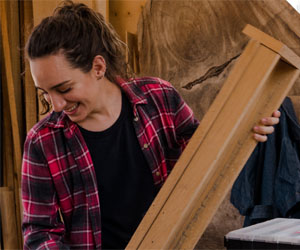 A Personal Touch: Handcrafted creations carry with them a unique, personal touch that simply cannot be replicated by machines. Each piece is a labor of love, a reflection of the artisan's skill, imagination, and passion. Whether it's a hand-carved wooden sculpture, a hand-stitched leather bag, or a hand-painted ceramic vase, the individuality of the artist is imprinted on the work, making it distinct and full of character.
A Personal Touch: Handcrafted creations carry with them a unique, personal touch that simply cannot be replicated by machines. Each piece is a labor of love, a reflection of the artisan's skill, imagination, and passion. Whether it's a hand-carved wooden sculpture, a hand-stitched leather bag, or a hand-painted ceramic vase, the individuality of the artist is imprinted on the work, making it distinct and full of character.
The Art Of Craftsmanship: Craftsmanship is at the heart of every handcrafted creation. Artisans invest time and effort honing their skills, often dedicating years to mastering their craft. This expertise shines through in the quality of their work. Every stitch, every brushstroke, every chisel mark is a testament to their commitment to perfection.
Uniqueness In Every Piece: In a world where identical, mass-produced items fill our lives, handcrafted creations stand as a beacon of uniqueness. Each piece is inherently one-of-a-kind, bearing its own imperfections, quirks, and distinctiveness. This individuality not only adds to the aesthetic value but also holds a certain sentimental charm for both the artist and the owner.
Sustainable And Ethical: Handcrafted creations are often associated with sustainability and ethical production. Artisans typically prioritize the use of natural, locally sourced materials, and the reduced carbon footprint makes these items eco-friendly. Additionally, the process of creating by hand often ensures that the production is more ethical and less exploitative compared to mass manufacturing.
Preservation Of Tradition: Many handcrafted traditions have been passed down through generations, preserving cultural heritage and age-old techniques. Artisans who create handcrafted items are often bearers of cultural traditions and the knowledge of time-honored methods. This continuity of tradition adds a profound layer of significance to each piece.
Herbs For Homemade Remedies
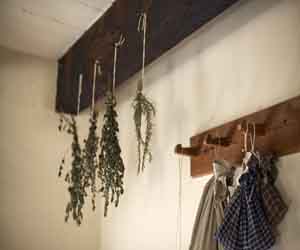 Creating Your Herbal Toolkit
Creating Your Herbal Toolkit
To get started with herbs for homemade remedies, it's essential to build a basic herbal toolkit. Here are some key herbs to consider:
1. Lavender: Known for its soothing properties, lavender can help alleviate stress, anxiety, and insomnia. It's often used in teas, essential oils, and as a topical treatment for burns and insect bites.
2. Echinacea: Echinacea is celebrated for its immune-boosting capabilities. It's commonly used to fend off or reduce the duration of colds and flu.
3. Aloe Vera: Aloe vera is renowned for its ability to heal skin ailments, from sunburn to minor cuts and wounds. Its gel is a go-to remedy for soothing and repairing damaged skin.
4. Chamomile: Chamomile is a gentle herb used to calm digestive issues and promote relaxation. It's often found in teas, but its essential oil can be used topically for various skin conditions.
5. Peppermint: Peppermint is a versatile herb known for aiding digestion and alleviating headaches. It can be used in teas, infused oils, or as a topical rub.
The Power Of Hands-On Expression
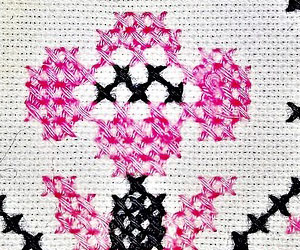 At its core, DIY creativity encourages self-expression. It allows individuals to break free from the constraints of pre-made products and to personalize their world. Whether you're sewing your own clothes, designing custom furniture, or creating unique artwork, DIY projects enable you to infuse your personality and style into every piece. This self-expression not only fosters a sense of ownership but also promotes a deeper connection to the things you make.
At its core, DIY creativity encourages self-expression. It allows individuals to break free from the constraints of pre-made products and to personalize their world. Whether you're sewing your own clothes, designing custom furniture, or creating unique artwork, DIY projects enable you to infuse your personality and style into every piece. This self-expression not only fosters a sense of ownership but also promotes a deeper connection to the things you make.
Engaging in DIY projects fosters a sense of accomplishment. There's an undeniable satisfaction in turning raw materials into a functional item or a work of art. Completing a DIY project instills a sense of pride and boosts self-esteem. It's a tangible reminder of your ability to create and innovate, which can be incredibly empowering.
Moreover, DIY creativity sparks problem-solving skills. Crafting your own solutions to challenges and hurdles in a project can be intellectually stimulating. It encourages critical thinking and resourcefulness as you seek to find the best way to achieve your vision. Whether it's figuring out how to fix a leaky faucet or designing a custom circuit board for a personal electronics project, DIY creativity demands a degree of innovation.
The DIY approach is cost-effective. Creating your own items or solving problems independently often saves money in the long run. Instead of purchasing expensive pre-made products or paying for professional services, DIY allows you to use your resources efficiently, relying on your skills and tools. It's a practical way to live sustainably while enjoying the process of creation.
DIY creativity also encourages a sense of community. Many individuals who engage in DIY projects find themselves participating in local crafting groups, makerspaces, or online forums where they can share ideas, gain inspiration, and collaborate with like-minded people. This sense of community fosters connections, friendships, and mentorships that enrich the overall experience of DIY creativity.